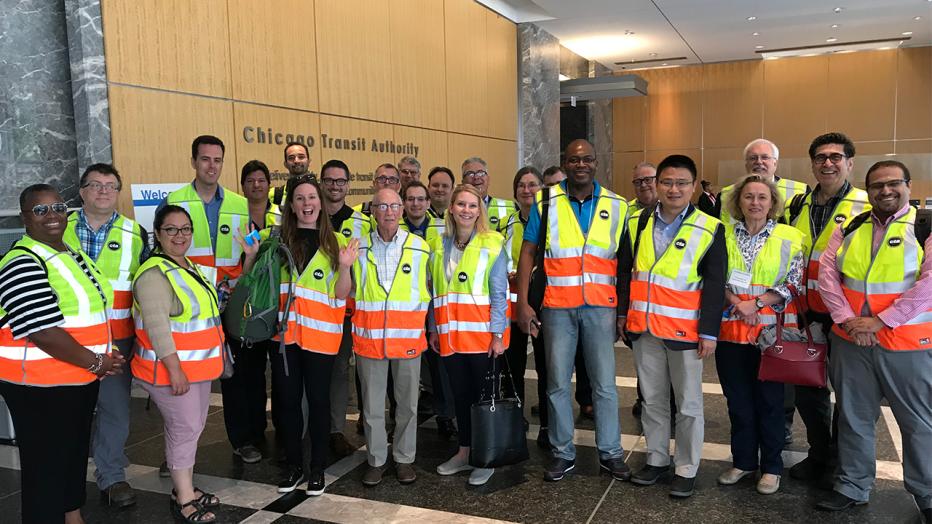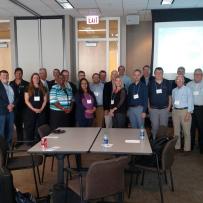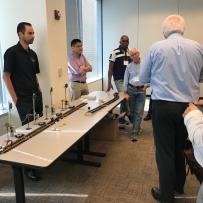
The Windy City was the place to be last month for rail and transit professionals.
The Passenger Rail Engineering Education Symposium (p-REES) program – a North American passenger rail industry event jointly sponsored by the American Public Transportation Association (APTA) and the American Railway Engineering and Maintenance-of-Way Association (AREMA) and supported by Jacobs – brought together educators from 17 institutions with industry professionals to share information and experiences to increase the level of rail and transit engineering education in North America.
About p-REES
p-REES was developed to address the rapidly approaching workforce shortage in the rail and transit industry, while increasing the number of post-secondary programs that can address this issue. The p-REES program takes place every other year, alternating with the AREMA Railway Engineering Education Symposium (REES) program to educate more than 30 college and university professors from the U.S. and Canada.

Hosted by the Chicago Transit Authority (CTA) and conducted at CTA headquarters, this year’s event was modeled after AREMA’s REES, a long-standing program that fosters interest among university faculty in freight railway engineering. APTA business members, the CTA, METRA Commuter railroad and participants affiliated with the National University Rail Center (NURail) provided instructors for the symposium.
“There are tremendous career opportunities for a new generation of young professionals educated in principles of rail transport,” shared NURail Center director, professor and executive director Christopher Barkan. “Public transport organizations should encourage and support partnerships with colleges and universities to help them expand their rail educational and research programs; p-REES was a critical first step in achieving this.”
APTA President and CEO Paul Skoutelas and Executive Director/CEO Beth Caruso, addressed the group and shared the associations’ desire to have more educational institutions preparing engineers to fill the increasing needs of the rail and transit industry. Senior level representatives from the CTA and METRA agencies and engineering consulting companies reinforced the need for engineers to enter the industry.
“I really enjoy sharing with professors the types of things that have made my 40+ years in the railroad industry so rewarding,” reflects Jacobs’ Global Technology Leader for Track & Civil Mike Loehr. “The ability to work in multi-discipline teams to solve the complex problems related to moving freight and people efficiently makes for interesting projects.”

Presentations focused on railroad operations/modal characteristics, track, basic signals, vehicles and traction. Additional presentations, meant as train the trainer modules, addressed starting and growing higher education rail courses, complete with reference materials, pre-worked homework examples, and classroom demonstration tools with the instructions for their construction.
Site tours included the CTA Operations Control Center (OCC) and two projects involving Jacobs, the Red-Purple Modernization and the newly-renovated and historic Wilson Station. Participants were able to able to ride the CTA trains (a first for some attendees) to observe rush hour train movement on the Red and Purple Lines and see firsthand the vital need for the modernization program projects.
Planning for p-REES 2021 will begin in the next several weeks. Mike continues, “Next year we’d like to consider offering more information on structures and facilities. Selecting a transit system to host the program is the first key item as we work to attract professors from a broader range of academic disciplines like architecture, electrical engineering and structural engineering.”












































